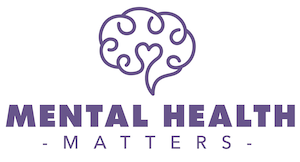Lesson 2.4 Substance Use Disorder, Post Traumatic Stress Disorder, and Postpartum Depression
Be sure to scroll down to learn about three more common mental diagnoses.
Substance Use Disorder
Substance use disorders — the repeated misuse of alcohol and/or drugs — often occur simultaneously in individuals with mental illness, usually to cope with overwhelming symptoms. The combination of these two illnesses has its own term: dual diagnosis, or co-occurring disorders. Either disorder (substance use or mental illness) can develop first. To learn more, visit Recovery Research Institute’s (2021) infographic, Diagnosing Substance Use Disorder.
 Video: “Breaking Down the Stigma of Addiction” [3:36]
Video: “Breaking Down the Stigma of Addiction” [3:36]
William shares how Substance Use Disorder affected his life.
Post Traumatic Stress Disorder (PTSD)
Traumatic events—such as an accident, assault, military combat or natural disaster—can have lasting effects on a person’s mental health. Symptoms of PTSD usually begin within three months after experiencing or being exposed to a traumatic event. Symptoms of PTSD may be re-experiencing the memory, avoidance, cognitive and mood symptoms, and arousal symptoms.
 Video: “Understanding DSM-5 Criteria for PTSD: A Disorder of Extinction” [10:32]
Video: “Understanding DSM-5 Criteria for PTSD: A Disorder of Extinction” [10:32]
Dr. Rothbaum shares the definition of PTSD and the associated symptoms in this video.
Postpartum Depression
Any woman can experience postpartum depression and it has no relationship to a woman’s capacity to be a good mother. Psychotic symptoms in the peripartum timeframe are less common after childbirth and are characterized by seeing things that don’t exist, confusion, rapid mood swings and thoughts of harming oneself or the infant.
 Video: “Understanding Postpartum Depression” [1:00]
Video: “Understanding Postpartum Depression” [1:00]
In this video, Dr. Bhide shares symptoms to look for when experiencing postpartum depression.
